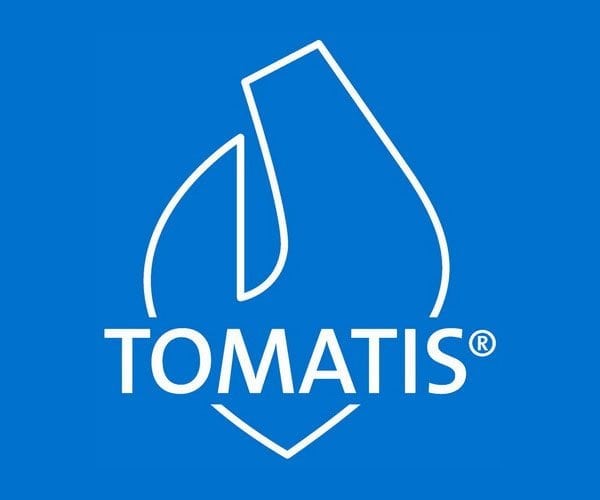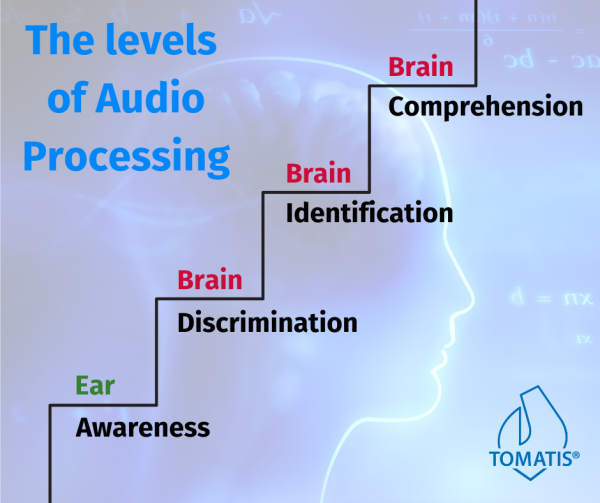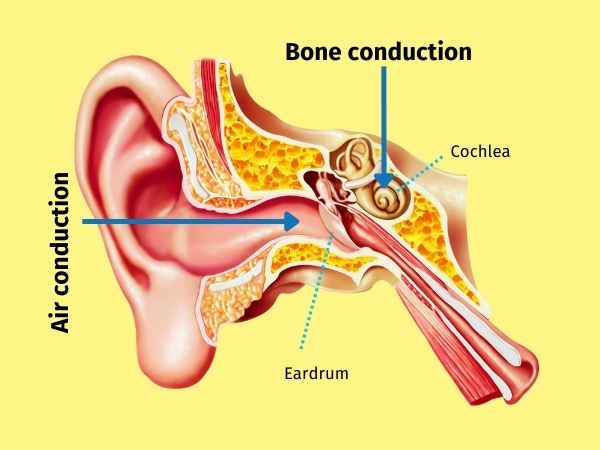If you don’t find an answer to your question here, please contact us so we can add it to the list!
FAQ - Frequently Asked Questions
A Tomatis® programme stimulates the brain in the most natural and gentle way possible using the auditory system. We help business people and toddlers, school children, and the elderly – and everything in between. The ability to listen is fundamental for success, happiness, and wellbeing at any age. Learning new skills is ageless.
Have you ever tried to get someone’s attention by clapping your hands? To get somebody’s attention, you need an element of surprise to cut through the “noise”. The brain is very sensitive to changes in the environment and most of all UNPREDICTABLE changes. Tomatis® auditory retraining uses unpredictable changes in music processed in real-time (not recordings) to gradually improve your ability to focus and pay attention. For children and adults alike.
The Tomatis® Method was invented by Dr Alfred Tomatis (1920-2001). He was a French ear-nose-throat doctor, surgeon, inventor, and scientist who in the 1950s created a new educational method based on sound. He spent the rest of his life improving the technology and methodology – improvements that continue today and have taken the Tomatis® Method to an even higher level.
Many of our clients are children with learning or auditory perception problems. Other groups are highly successful and ambitious business people who want to increase their performance. The Tomatis® Method is beneficial for (almost) everyone – leaders, professionals, students, seniors. They all want to sleep better, feel less anxious, communicate better, explore their musicality, singing, or learning a foreign language. The Tomatis® Method helps you to make the most of your potential.
The Tomatis® Method uses the natural auditory pathways and the same mechanisms as Mother Nature to stimulate growth and learning. Dr Tomatis realised that the brain is plastic long before it was scientifically proven and developped the method with this in mind.
The Tomatis® Electronic Ear is the sound processing device Dr Tomatis invented to educate his clients’ ability to listen. Music and voice is processed in real-time and ALWAYS new, fresh, and surprising for the auditory system. The Tomatis® Method never uses recorded music. The unique technology stimulates learning with new challenges every day.
Today, certified Tomatis® Practitioners around the world use the latest version of the Electronic Ear – the TalksUp® – based on the same principles, dynamic filters, Gating® and time delays that Dr Tomatis invented. The difference is that the sound quality, range, and filter precision we have now is far better than anything Dr Tomatis had access to. Today’s technology is amazing and the Tomatis® Method unique in its effectiveness.
Dr Tomatis received the Gold Medal for Scientific Research at the World Exhibition in Brussels in 1958.
Tomatis® is safe. The Tomatis® Method is a natural and non-invasive educational programme that stimulates the brain through soft and gentle music in high-quality headphones with air and bone conduction. Tomatis® is never about loud sounds. Tomatis® stimulates the auditory system with soft, relaxing and joyful sounds to bring about change.
Tomatis® creates changes that you, at first, may only see a quick glimpse of. Over time literally hundreds of changes will appear and over time become permanent.
What do you want to achieve? Discuss your goals with the Tomatis® Practitioner during the Initial Assessment so they can create and optimise a Tomatis® programme for you.
To get an idea of the impact of the Tomatis® Method, you can find examples here: Glimpses of change.
Already more than 14 schools in New Zealand use the Tomatis® for Education programme to improve learning outcomes. Around the world, 300+ schools from Early Childhood Education to University use Tomatis® to improve a variety of skills.
The Tomatis® Method is a pedagogical method and helps with overall sensory integration, attention and learning, communication, speech, and behaviour. Especially when combined with other interventions, Tomatis® can provide relief and make a huge difference to anyone on the autistic spectrum.
The thalamus, an egg-shaped structure deep in the brain, is an important sensory filter that seems to function differently in autism. It’s involved with unusual sensory responses in people with autism — such as extreme sound sensitivity.
Recent research shows that the role of the thalamus in autism reaches much further — influencing sleep, social skills, attention and learning. https://www.spectrumnews.org/news/brains-sensory-switchboard-has-complex-connections-to-autism/
Dr Tomatis developed the Tomatis® Method to help structure and organise the work of the thalamus relay station. When the thalamus operates more smoothly, the entire brain works better.
In Australia, parents can get funding for Tomatis® sessions through the NDIS (National Disability Insurance Scheme). In New Zealand, funding for sessions are decided case by case. Read more about how Tomatis® can help ASD: https://tomatis.com.au/who-do-we-help/autism/
We suggest that it may be very beneficial to do Tomatis® as soon as the medical team in charge approve of Tomatis® auditory stimulation. This could be when a person is still in hospital in a coma (Glasgow Coma Scale). Other times, Tomatis® can be used when hospital medical treatment has finished and home rehabilitation started. Our experience, supported by Tomatis® Method research, shows that Speech and Language Therapy, Physio, and Cognitive interventions are enhanced by Tomatis®. It is important to recognise however, that Tomatis® is an educational method that improves learning outcomes and not a medical intervention. Read more here.
The truth is that anyone can claim their work with music is “based on” Dr Tomatis® work or refer to the “Tomatis ideal listening curve”, or refer to Tomatis® Method research. He was the undisputed pioneer. Everything associated with sound therapy is “based on” his work.
So far, no other sound stimulation method has been able to recreate the Tomatis® Method, nor its results.
Sadly it happens that clients have been led to believe they have done a Tomatis® programme or a Tomatis® Listening Test when they have experienced nothing of the sort.
The Tomatis® Method continues to develop and is more effective today than ever before thanks to advances in both methodology and technology.
Only Tomatis® Practitioners listed on this site and on tomatis.com, have access to the Tomatis® equipment and are duly certified to use the method. Look for the Tomatis® logo on their equipment and documentation!
The Tomatis® Professional education is a postgraduate education consisting of a series of certification courses (Level 1, 2, 3 and 4) for experienced therapists, teachers, or healthcare practitioners who want to incorporate Tomatis® in their work.
They must pass an admittance test before and an examination at the end of each course to be certified. At least six months’ practice is also required to advance to the next level.
In New Zealand, many Tomatis® Practitioners are teachers and remedial tutors. In the US and in South Africa, Tomatis® is used widely by Occupational Therapists, in Poland by Speech and Language Therapists, in Japan by foreign language teachers, in Russia by neuropsychologists, in Sweden for stress prevention and rehabilitation etc. The Tomatis® Method has a great many application areas.
The ear does more than receive sounds. It regulates your balance, rhythm and coordination. Try covering one ear while walking and you will see that your balance is affected!
Balance depends on the vestibule, a part of the inner ear that informs the brain of the tiniest body movements. The vestibule also controls posture and makes sure you don’t fall over.
The Tomatis® Method works to calibrate and re-train the vestibule to integrate its function with other parts of the brain. As a result, movements become less un-coordinated and instead more fluid and better organised. This is why Tomatis® has beneficial effects on various motor disorders — even without physical exercises — and for the elderly.
Have you noticed that your voice changes when you are overcome by emotions? This is because the Auditory Feedback Loop is disrupted. When this happens, your brain is unable to analyse, correct, and control your voice while speaking (in “real time”).
Re-activating the audio-vocal loop is a fundamental part of the Tomatis® Method for speech and language disorders.
A well functioning audio-vocal loop improves auditory discrimination, phonological awareness, and integration of rhythm — necessary for accurate speech and language.
Over 80% of sensory stimulation comes from our ears. Whether you’re awake or asleep, your ears are constantly bombarding your brain with stimuli.
Our ears need stimulation to energise the brain and activate the body. Sound and music play a vital role for our personal well-being. The richer the music is in high frequency harmonics, the more energy it provides. And it makes us happy!
This is why many elderly, because of deteriorating hearing, feel sad and listless.
Tomatis® often uses high frequency Mozart violin concertos with the added dynamic filters and Gating® that are unique for the Tomatis® Method — to provide lasting results in energy and well-being
Many children and adults don’t like hugs or touching because of sensory overload. It becomes too much and could even be painful for them. The Tomatis® Method stimulates the autonomous nervous system via the vagus nerve, which is connected to the ear. Tomatis® auditory retraining improves the brain’s overall ability to sort, prioritise, and handle sensory information.
Audio Processing – or listening as Dr Tomatis called it – is a network of complex interactions between our ears and different parts of the brain. One way of understanding it is to label the steps: awareness (the ear hears a sound), discrimination (the brain distinguishes one sound among others), identification (the brain recognises the sound using memory), comprehension (the brain understands what the sound means). The Tomatis® Method works at all levels of Audio Processing, improving your overall ability to learn and grow.
Listening is the brain’s ability to interpret what the ears hear.
Have you ever tried to get someone’s attention by clapping your hands? To get somebody’s attention, you need an element of surprise to cut through the “noise”. The brain is very sensitive to changes in the environment and most of all unpredictable changes. Tomatis® auditory retraining uses unpredictable changes in music processed in real-time (never recordings) to gradually improve your ability to focus and pay attention.
Dyspraxia is a condition affecting physical co-ordination. It causes a child or adult to perform less well than expected in daily activities for their age, and appear to move clumsily.
We recommend the Tomatis® Method when there are symptoms of dyspraxia and especially in combination with other therapies such as Occupational Therapy, Speech and Language therapy, and others depending on individual needs.
The Tomatis® Method uses the auditory system as a means to prepare the brain for learning and development.
There are no age restrictions with Tomatis® and the sooner you can begin the better. For babies, ask us for a referral to a Tomatis® practitioner with the necessary equipment and experience.
The Dyspraxia Foundation in the US has great information on their website. https://dyspraxiausa.org/
Click here for a story about Grant and how he was helped with Tomatis® and other therapies. https://dyspraxiausa.org/stories/grants-story/
As soon as possible. When you suspect something isn’t quite right with your baby’s development, toddler’s speech, or pre-schooler’s ability to interact socially, investigate your options. Don’t wait. It will likely not get better by itself.
Our experience shows that Tomatis® is best applied before resorting to medication and may reduce or even eliminate the need for it.
Licensed Tomatis® Practitioners can work with all ages, even babies.
Music and singing give you “cortical recharge” (a term sprung from Dr Alfred Tomatis). Your brain transforms the vibrational stimulation from music and singing into energy that lifts your spirits, boosts levels of oxytocin, helps reduce stress and anxiety, and improves learning.
With auditory dysfunction, the brain’s cortical recharge doesn’t function as it should. A licensed Tomatis® Practitioner can improve it with the Tomatis® Method auditory retraining providing lasting change — for years to come.
The ear is the most powerful sensory integrator of the human body. More than 80% of the stimulation our brain receives comes from our ears. The auditory system has a major role in overall brain stimulation and “cortical recharge” and is involved in all aspects of cerebral plasticity.
This explains why the Tomatis® Method is successfully used in many different areas of learning and development. The Tomatis® Method is a complementary tool to most therapeutic or pedagogical support.
It makes it possible to speed up and enhance the results obtained and thus significantly reduce the duration of a traditional therapeutic or medical plan. It can be used at any age (children, adults or seniors) and it can be used for one’s personal development to improve performance and well-being.
Dr Tomatis started to help people with Down Syndrome already in the 1960s. Ever since, Tomatis® Practitioners around the world continue his work with great success.
Many individuals with Down Syndrome have poor muscle tone, which leads to a less-than-ideal posture. They might be hunched or slumped over and have their mouth open with a protruding tongue. Speech production, especially articulation, is severely affected. Often only the immediate family understands what the person wants to say.
The Tomatis® Method improves muscular control, posture, and body image awareness. The Tomatis Gating® filters improve the brain’s ability to focus. Together with active voice training with a Tomatis® microphone, an individual with Down Syndrome gradually learns to distinguish between different language sounds leading to much improved speech and communication. There will be academic, social, and emotional improvements as well. As always with Tomatis®.
For a detailed explanation refer to this article by Paul Madaule. https://www.listeningcentre.com/UploadedFiles/Articles/Articles/Down-Syndrome.pdf
Sound is vibration! When it travels through the air to the eardrum, we use the term air conduction. Sound travels even better through the bones of the body: this is called bone conduction. Cover your ears and speak normally. You hear your voice perfectly clear because it travels mainly through the bones of the skull. Speak louder and you can feel your whole body vibrate.
During the Tomatis® listening sessions, music and voice are transmitted through special headphones equipped with both air and bone conduction. The sound reaches the auditory canal via the eardrum and directly to the cochlea through vibrations from the top of the skull.
Dr Tomatis discovered a natural way to improve listening (auditory processing) by first transmitting the sound via bone conduction followed by air conduction a fraction of a second later. This dual transmission of the sound at two different times educates the brain to correctly analyse the message and to pay attention.
The first bone conduction technology was implemented on Tomatis® headsets more than 40 years ago. Today, bone conduction technology is used in the medical industry (cochlear implants), military (ground intervention transmission helmets) and leisure (gaming, Google Glass).
The Tomatis® Method is the only auditory training programme with bone and air technology in combination with Electronic Gating® (dynamic filters and time delays) — the reasons why the Tomatis® Method gives profound and lasting results.
We have two hands, two eyes and two feet. You can be right or left dominant for each.
The same is true of your ears. One is dominant, which means that it’s processing the information faster than the other one. That might be because the connections of the right and left auditory pathways in the brain are different.
Neurologically, the left ear is connected to the right brain area while the right ear is connected to the left brain area. The right and left parts of the brain don’t use auditory information in the same way.
Studies have shown that each part of the auditory cortex is responsible for specific functions. The left auditory cortex (right ear) is linked to language comprehension and logical reasoning which is important for academic success. The right auditory cortex (left ear) is dedicated to emotional perception and musicality.
According to Dr Tomatis, children are left ear dominant at birth and should naturally switch to right ear dominance at 6-7 years of age. This doesn’t always happen which may cause life-long problems with learning and emotional regulation. Chronic stress and anxiety also affects auditory laterality. If you are left ear dominant or right ear dominant makes a huge difference in everyday life!
There are many reasons to contact a Tomatis® Practitioner and find out how the Tomatis® Method can help you or your child.
Listening (auditory processing) is about receiving, focusing on, and using what you hear.
The ability to listen is a complex skill where many things can go wrong. Sound waves make the eardrum vibrate. Tiny bones in the middle ear transmit the movement to a liquid in the inner ear. Waves in the liquid trigger hair cells in the cochlea and vestibular system to send nerve signals to the brain.
Then the true miracle begins: the brain sends the information far and deep, interprets, and takes action. The question is how well your brain is handling the information. This is what Dr. Tomatis called listening long before the term auditory processing was invented.
When your listening – or auditory processing skills – are not working as they should, information is delayed, ends up in the wrong place, or is simply lost in translation.
If this happens to you or your child, the Tomatis® Method can help.


